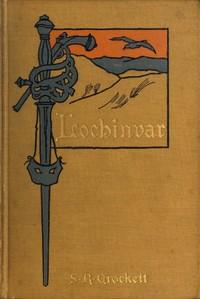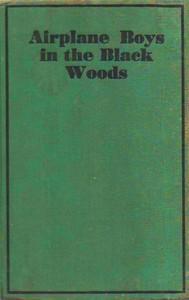|
|
Read this ebook for free! No credit card needed, absolutely nothing to pay.Words: 120732 in 27 pages
This is an ebook sharing website. You can read the uploaded ebooks for free here. No credit cards needed, nothing to pay. If you want to own a digital copy of the ebook, or want to read offline with your favorite ebook-reader, then you can choose to buy and download the ebook.

: Insect Architecture by Rennie James Wood J G John George Editor - Insects Behavior@FreeBooksWed 07 Jun, 2023 gly recommended to the notice of the well-educated. The pleasures of childhood are generally supposed to be more exquisite, and to contain less alloy, than those of riper years; and if so, it must be because then everything appears new and dressed in fresh beauties: while in manhood, and old age, whatever has frequently recurred begins to wear the tarnish of decay. The study of nature affords us a succession of "ever-new delights," such as charmed us in childhood, when everything had the attractions of novelty and beauty; and thus the mind of the naturalist may have its own fresh and vigorous thoughts, even while the infirmities of age weigh down the body. It has been objected to the study of insects, as well as to that of Natural History in general, that it tends to withdraw the mind from subjects of higher moment; that it cramps and narrows the range of thought; and that it destroys, or at least weakens, the finer creations of the fancy. Now, we should allow this objection in its fullest extent, and even be disposed to carry it further than is usually done, if the collecting of specimens only, or, as the French expressly call them, chips , be called a study. But the mere collector is not, and cannot be, justly considered as a naturalist; and, taking the term naturalist in its enlarged sense, we can adduce some distinguished instances in opposition to the objection. Rousseau, for example, was passionately fond of the Linnaean botany, even to the driest minutiae of its technicalities; and yet it does not appear to have cramped his mind, or impoverished his imagination. If Rousseau, however, be objected to as an eccentric being, from whose pursuits no fair inference can be drawn, we give the illustrious example of Charles James Fox, and may add the names of our distinguished poets, Goldsmith, Thomson, Gray, and Darwin, who were all enthusiastic naturalists. We wish particularly to insist upon the example of Gray, because he was very partial to the study of insects. It may be new to many of our readers, who are familiar with the 'Elegy in a Country Churchyard,' to be told that its author was at the pains to turn the characteristics of the Linnaean orders of insects into Latin hexameters, the manuscript of which is still preserved in his interleaved copy of the 'Systema Naturae.' Further, to use the somewhat exaggerated words of Kirby and Spence, whose work on Entomology is one of the most instructive and pleasing books on the science, 'Aristotle among the Greeks, and Pliny the Elder among the Romans, may be denominated the fathers of Natural History, as well as the greatest philosophers of their day; yet both these made insects a principal object of their attention: and in more recent times, if we look abroad, what names greater than those of Redi, Malpighi, Vallisnieri, Swammerdam, Leeuwenhoek, R?aumur, Linnaeus, De Geer, Bonnet, and the Hubers? and at home, what philosophers have done more honour to their country and to human nature than Ray, Willughby, Lister, and Derham? Yet all these made the study of insects one of their most favourite pursuits." And yet this study has been considered, by those who have superficially examined the subject, as belonging to a small order of minds; and the satire of Pope has been indiscriminately applied to all collectors, while, in truth, it only touches those who mistake the means of knowledge for the end:-- Thus exclaims the Goddess of Dulness, sweeping into her net all those who study nature in detail. But if the matter were rightly appreciated, it would be evident that no part of the works of the Creator can be without the deepest interest to an inquiring mind; and that a portion of creation which exhibits such extraordinary manifestations of design as is shown by insects must have attractions for the very highest understanding. An accurate knowledge of the properties of insects is of great importance to man, merely with relation to his own comfort and security. The injuries which they inflict upon us are extensive and complicated; and the remedies which we attempt, by the destruction of those creatures, both insects, birds, and quadrupeds, who keep the ravages in check, are generally aggravations of the evil, because they are directed by an ignorance of the economy of nature. The little knowledge which we have of the modes by which insects may be impeded in their destruction of much that is valuable to us, has probably proceeded from our contempt of their individual insignificance. The security of property has ceased to be endangered by quadrupeds of prey, and yet our gardens are ravaged by aphides and caterpillars. It is somewhat startling to affirm that the condition of the human race is seriously injured by these petty annoyances; but it is perfectly true that the art and industry of man have not yet been able to overcome the collective force, the individual perseverance, and the complicated machinery of destruction which insects employ. A small ant, according to a most careful and philosophical observer, opposes almost invincible obstacles to the progress of civilization in many parts of the equinoctial zone. These animals devour paper and parchment; they destroy every book and manuscript. Many provinces of Spanish America cannot, in consequence, show a written document of a hundred years' existence. "What development," he adds, "can the civilization of a people assume, if there be nothing to connect the present with the past--if the depositories of human knowledge must be constantly renewed--if the monuments of genius and wisdom cannot be transmitted to posterity?" Again, there are beetles which deposit their larvae in trees in such formidable numbers that whole forests perish beyond the power of remedy. The pines of the Hartz have thus been destroyed to an enormous extent; and in North America, at one place in South Carolina, at least ninety trees in every hundred, upon a tract of two thousand acres, were swept away by a small black, winged bug. And yet, according to Wilson, the historian of American birds, the people of the United States were in the habit of destroying the redheaded woodpecker, the great enemy of these insects, because he occasionally spoilt an apple. The same delightful writer and true naturalist, speaking of the labours of the ivory-billed woodpecker, says, "Would it be believed that the larvae of an insect or fly, no larger than a grain of rice, should silently, and in one season, destroy some thousand acres of pine-trees, many of them from two to three feet in diameter, and a hundred and fifty feet high? In some places the whole woods, as far as you can see around you, are dead, stripped of the bark, their wintry-looking arms and bare trunks bleaching in the sun, and tumbling in ruins before every blast." The subterraneous larva of some species of beetle has often caused a complete failure of the seed-corn, as in the district of Halle in 1812. The corn-weevil, which extracts the flour from grain, leaving the husk behind, will destroy the contents of the largest storehouses in a very short period. The wire-worm and the turnip-fly are dreaded by every farmer. The ravages of the locust are too well known not to be at once recollected as an example of the formidable collective power of the insect race. The white ants of tropical countries sweep away whole villages with as much certainty as a fire or an inundation; and ships even have been destroyed by these indefatigable republics. Our own docks and embankments have been threatened by such minute ravagers. The enormous injuries which insects cause to man may thus be held as one reason for ceasing to consider the study of them as an insignificant pursuit; for a knowledge of their structure, their food, their enemies, and their general habits, may lead, as it often has led, to the means of guarding against their injuries. At the same time we derive from them both direct and indirect benefits. The honey of the bee, the dye of the cochineal, and the web of the silk-worm, the advantages of which are obvious, may well be balanced against the destructive propensities of insects which are offensive to man. But a philosophical study of natural history will teach us that the direct benefits which insects confer upon us are even less important than their general uses in maintaining the economy of the world. The mischiefs which result to us from the rapid increase and the activity of insects are merely results of the very principle by which they confer upon us numberless indirect advantages. Forests are swept away by minute beetles; but the same agencies relieve us from that extreme abundance of vegetable matter which would render the earth uninhabitable were this excess not periodically destroyed. In hot countries the great business of removing corrupt animal matter, which the vulture and hyaena imperfectly perform, is effected with certainty and speed by the myriads of insects that spring from the eggs deposited in every carcase by some fly seeking therein the means of life for her progeny. Destruction and reproduction, the great laws of nature, are carried on very greatly through the instrumentality of insects; and the same principle regulates even the increase of particular species of insects themselves. When aphides are so abundant that we know not how to escape their ravages, flocks of lady-birds instantly cover our fields and gardens to destroy them. Such considerations as these are thrown out to show that the subject of insects has a great philosophical importance--and what portion of the works of nature has not? The habits of all God's creatures, whether they are noxious, or harmless, or beneficial, are worthy objects of our study. If they affect ourselves, in our health or our possessions, whether for good or for evil, an additional impulse is naturally given to our desire to attain a knowledge of their properties. Such studies form one of the most interesting occupations which can engage a rational and inquisitive mind; and, perhaps, none of the employments of human life are more dignified than the investigation and survey of the workings and the ways of nature in the minutest of her productions. The exercise of that habit of observation which can alone make a naturalist--"an out-of-door naturalist," as Daines Barrington calls himself--is well calculated to strengthen even the most practical and merely useful powers of the mind. One of the most valuable mental acquirements is the power of discriminating among things which differ in many minute points, but whose general similarity of appearance usually deceives the common observer into a belief of their identity. The study of insects, in this point of view, is most peculiarly adapted for youth. According to our experience, it is exceedingly difficult for persons arrived at manhood to acquire this power of discrimination; but, in early life, a little care on the part of the parent or teacher will render it comparatively easy. In this study the knowledge of things should go along with that of words. "If names perish," says Linnaeus, "the knowledge of things perishes also:" and, without names, how can any one communicate to another the knowledge he has acquired relative to any particular fact, either of physiology, habit, utility, or locality? On the other hand, mere catalogue learning is as much to be rejected as the loose generalizations of the despisers of classification and nomenclature. To name a plant, or an insect, or a bird, or a quadruped rightly, is one step towards an accurate knowledge of it; but it is not the knowledge itself. It is the means, and not the end in natural history, as in every other science. If the bias of opening curiosity be properly directed, there is not any branch of natural history so fascinating to youth as the study of insects. It is, indeed, a common practice in many families to teach children, from their earliest infancy, to treat the greater number of insects as if they were venomous and dangerous, and, of course, meriting to be destroyed, or at least avoided with horror. Associations are by this means linked with the very appearance of insects, which become gradually more inveterate with advancing years; provided, as most frequently happens, the same system be persisted in, of avoiding or destroying almost every insect which is unlucky enough to attract observation. How much rational amusement and innocent pleasure is thus thoughtlessly lost; and how many disagreeable feelings are thus created, in the most absurd manner! In order to show that the study or the observation of insects is peculiarly fascinating to children, even in their early infancy, we may refer to what we have seen in the family of a friend, who is partial to this, as well as to all the departments of natural history. Our friend's children, a boy and girl, were taught, from the moment they could distinguish insects, to treat them as objects of interest and curiosity, and not to be afraid even of those which wore the most repulsive appearance. The little girl, for example, when just beginning to walk alone, encountered one day a large staphylinus , which she fearlessly seized, and did not quit her hold, though the insect grasped one of her fingers in his formidable jaws. The mother, who was by, knew enough of the insect to be rather alarmed for the consequences, though she prudently concealed her feelings from the child. She did well; for the insect was not strong enough to break the skin, and the child took no notice of its attempts to bite her finger. A whole series of disagreeable associations with this formidable-looking family of insects was thus averted at the very moment when a different mode of acting on the part of the mother would have produced the contrary effect. For more than two years after this occurrence the little girl and her brother assisted in adding numerous specimens to their father's collection, without the parents ever having cause, from any accident, to repent of their employing themselves in this manner. The sequel of the little girl's history strikingly illustrates the position for which we contend. The child happened to be sent to a relative in the country, where she was not long in having carefully instilled into her mind all the usual antipathies against "everything that creepeth on the earth;" and though she afterwards returned to her paternal home, no persuasion or remonstrance could ever again persuade her to touch a common beetle, much less a staphylinus, with its tail turned up in a threatening attitude, and its formidable jaws ready extended for attack or defence. We do not wish that children should be encouraged to expose themselves to danger in their encounters with insects. They should be taught to avoid those few which are really noxious--to admire all--to injure none. A collection of insects is to the true naturalist what a collection of medals is to the accurate student of history. The mere collector, who looks only to the shining wings of the one, or the green rust of the other, derives little knowledge from his pursuit. But the cabinet of the naturalist becomes rich in the most interesting subjects of contemplation, when he regards it in the genuine spirit of scientific inquiry. What, for instance, can be so delightful as to examine the wonderful variety of structure in this portion of the creation; and, above all, to trace the beautiful gradations by which one species runs into another? Their differences are so minute, that an unpractised eye would proclaim their identity; and yet, when the species are separated, and not very distantly, they become visible even to the common observer. It is in examinations such as these that the naturalist finds a delight of the highest order. While it is thus one of the legitimate objects of his study to attend to minute differences of structure, form, and colouring, he is not less interested in the investigation of habits and economy; and in this respect the insect world is inexhaustibly rich. We find herein examples of instinct to parallel those of all the larger animals, whether they are solitary or social; and innumerable others besides, altogether unlike those manifested in the superior departments of animated nature. These instincts have various directions, and are developed in a more or less striking manner to our senses, according to the force of the motive by which they are governed. Some of their instincts have for their object the preservation of insects from external attack; some have reference to procuring food, and involve many remarkable stratagems; some direct their social economy, and regulate the condition under which they live together either in monarchies or republics, their colonizations, and their migrations; but the most powerful instinct which belongs to insects has regard to the preservation of their species. We find, accordingly, that as the necessity for this preservation is of the utmost importance in the economy of nature, so for this especial object many insects, whose offspring, whether in the egg or the larva state, are peculiarly exposed to danger, are endued with an almost miraculous foresight, and with an ingenuity, perseverance, and unconquerable industry, for the purpose of avoiding those dangers, which are not to be paralleled even by the most singular efforts of human contrivance. The same ingenuity which is employed for protecting either eggs, or caterpillars and grubs, or pupae and chrysalides, is also exercised by many insects for their own preservation against the changes of temperature to which they are exposed, or against their natural enemies. Many species employ those contrivances during the period of their hibernation, or winter sleep. For all these purposes some dig holes in the earth, and form them into cells; others build nests of extraneous substances, such as bits of wood and leaves; others roll up leaves into cases, which they close with the most curious art; others build a house of mud, and line it with the cotton of trees, or the petals of the most delicate flowers; others construct cells, of secretions from their own bodies; others form cocoons, in which they undergo their transformation; and others dig subterraneous galleries, which, in their complexity of arrangement, in solidity, and in complete adaptation to their purposes, vie with the cities of civilised man. The contrivances by which insects effect these objects have been accurately observed and minutely described, by patient and philosophical inquirers, who knew that such employments of the instinct with which each species is endowed by its Creator offered the most valuable and instructive lessons, and opened to them a wide field of the most delightful study. The construction of their habitations is certainly among the most remarkable peculiarities in the economy of insects; and it is of this subject that we propose to treat under the general name, which is sufficiently applicable to our purpose, of Insect Architecture. In the descriptions which we shall give of Insect Architecture, we shall employ as few technical words as possible: and such as we cannot well avoid, we shall explain in their places; but, since our subject chiefly relates to the reproduction of insects, it may be useful to many readers to introduce here a brief description of the changes which they undergo. Larvae are remarkably small at first, but grow rapidly. The full-grown caterpillar of the goat-moth is thus seventy-two thousand times heavier than when it issues from the egg; and the maggot of the blow-fly is, in twenty-four hours, one hundred and fifty-five times heavier than at its birth. Some larvae have feet, others are without; none have wings. They cannot propagate. They feed voraciously on coarse substances; and as they increase in size, which they do very rapidly, they cast their skins three or four times. In defending themselves from injury, and in preparing for their change by the construction of secure abodes, they manifest great ingenuity and mechanical skill. The figures on the preceding page exemplify various forms of insects in this stage of their existence. STRUCTURES FOR PROTECTING EGGS.--MASON-WASPS; MASON-BEES; MINING-BEES. Free books android app tbrJar TBR JAR Read Free books online gutenberg More posts by @FreeBooks
: Lochinvar: A Novel by Crockett S R Samuel Rutherford Thulstrup Thure De Illustrator - Covenanters Fiction; Scotland History 17th century Fiction@FreeBooksWed 07 Jun, 2023

: Airplane Boys in the Black Woods by Craine E J Edith Janice - Adventure stories; Air pilots Juvenile fiction; Mystery fiction; Airplanes Juvenile fiction@FreeBooksWed 07 Jun, 2023
|
Terms of Use Stock Market News! © gutenberg.org.in2025 All Rights reserved.






